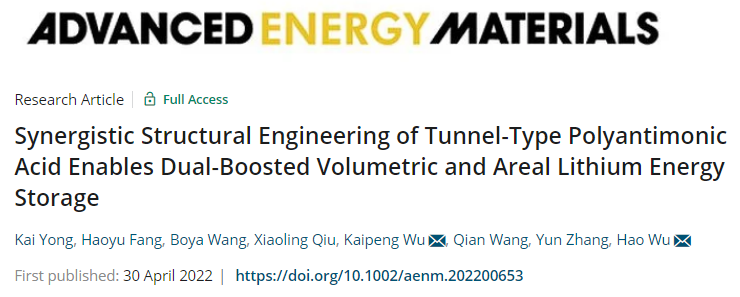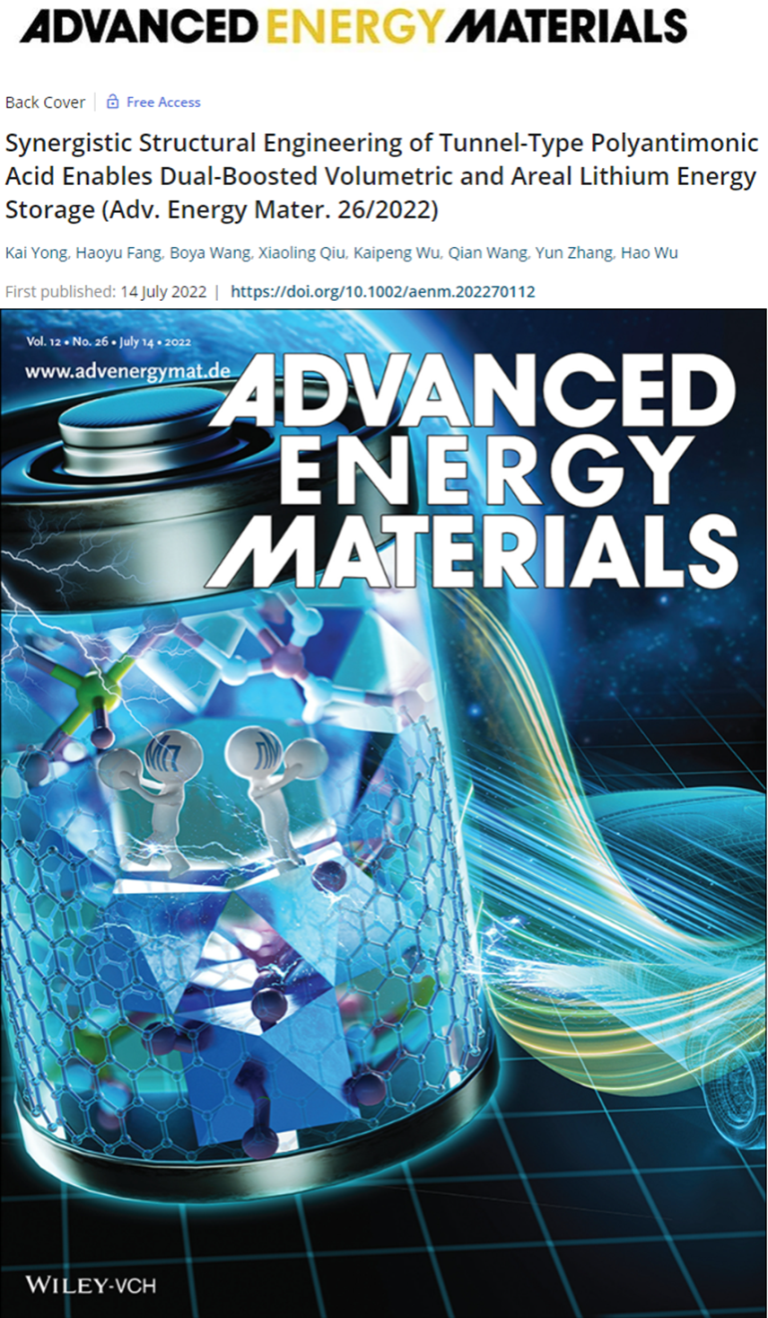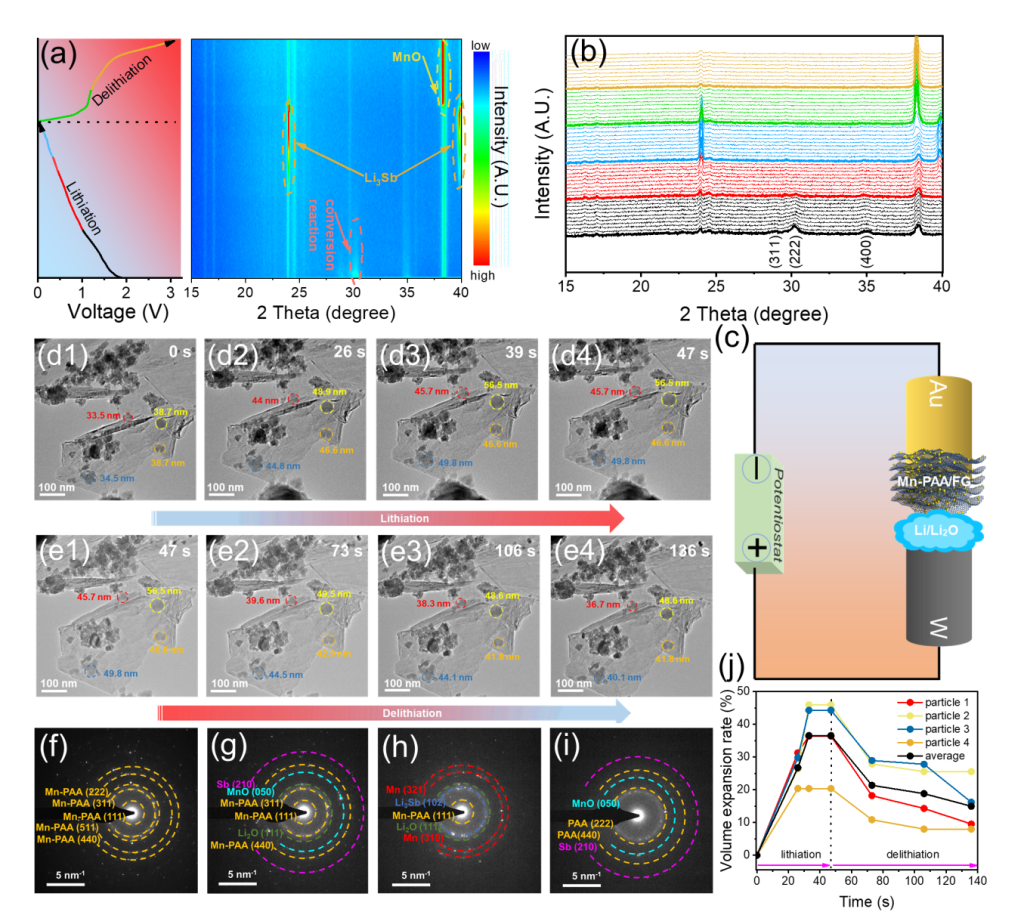Professor Yun Zhang and Hao Wu' s research team at the College of Materials Science and Engineering (CMSE) has made important progress in the research of antimonate based lithium-ion batteries with high volume/high area energy density. The team published in a cover paper in Advanced Energy Materials their research results "Synergistic Structural Engineering of Tunnel-Type Polyantimonic Acid Enables Dual-Boosted Volumetric and Areal Lithium Energy Storage”. The first author of this paper is Kai Yong, a Class 2019 master student (now a Class 2022 doctoral student) from CMSE. The corresponding authors are Hao Wu, a research fellow and KaiPeng Wu, an associate researcher. Sichuan University is the sole signatory and corresponding unit.


The Cover ofAdvanced Energy Materials
Tunnel-structuredpolyantimonic acid (PAA) is a potential low-cost and high-capacity antimony based energy storage electrode material because of its unique interconnection tunnel pyrochlore structure and pentavalent antimony element. In 2020, the team reported for the first time the application of antimoniate in lithium-ion batteries (Advanced Energy Materials, 2020, 10, 1903119).

In situ characterization technology and the transformation mechanism of phase structure and micro morphology of materials
“Tunnel-structured polyantimonic acid (PAA) is an intriguing high-capacity anode candidate for alkali-metal-ion storage; however, the awful electroconductivity of PAA (≈10–10 S cm–1) normally requires coupling with large-surface-area conductive substrate (e.g., graphene), conversely leading to poor scalability, ultralow density, and execrable volumetric energy. Synergistic structural engineering of PAA via bulk-phase ion substitution and incorporation with low-cost flake graphite (FG) is presented here to construct composite electrodes for lithium-storage. The full-occupation of Mn2+ into the tunnel-centers of PAA synchronously improves its bulk conductivity (≈10–5 S cm–1) and true density (4.58 g cm–3), whilst less than 20% volume expansion of PAA is consequently achieved by FG confinement with enhanced multielectron-reaction kinetics, unveiled by ex/in situ techniques. --- Moreover, 3D-printed composite electrodes with tunable shape and mass-loading are also implemented to showcase impressive areal/volumetric Li+-storage performance. Paring with high-loading and high-compact-density LiCoO2 cathodes (e.g., 18.0 mg cm–2/3.53 g cc–1), full-cells achieve remarkable electrode-level areal-/volumetric-energy-densities beyond 7.0 mWh cm–2/850 Wh L–1cathode+anode.” (Abstract)
The research team developed a feasible and effective collaborative structural engineering strategy and laid an important research foundation for its further development and application.The research work was funded by the "National Natural Science Foundation of China (21878192)", "China Special Fund for University Basic Scientific Research (2016scu04a18)" and "Graduate Scientific Research and Innovation Fund of Sichuan University".
https://onlinelibrary.wiley.com/doi/10.1002/aenm.202200653DOI:10.1002/aenm.202200653
